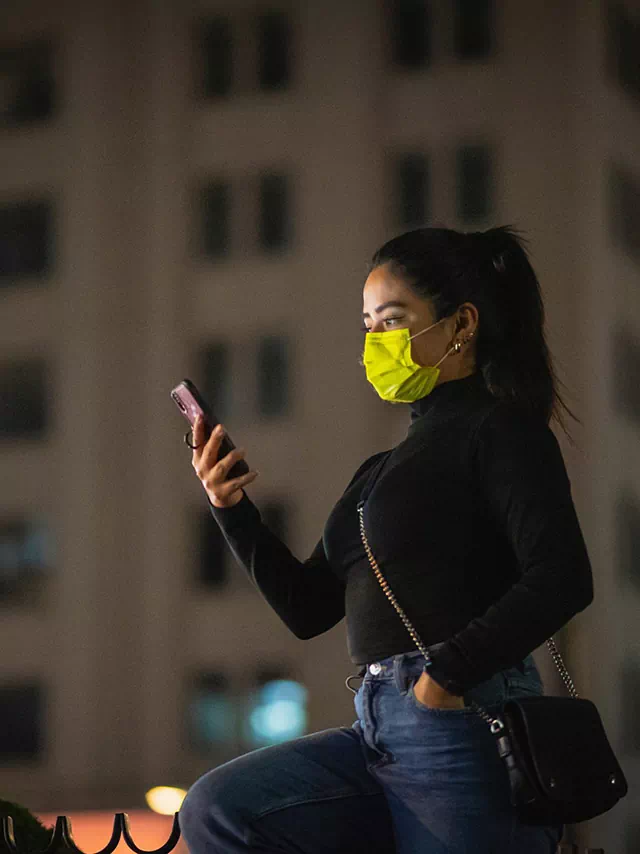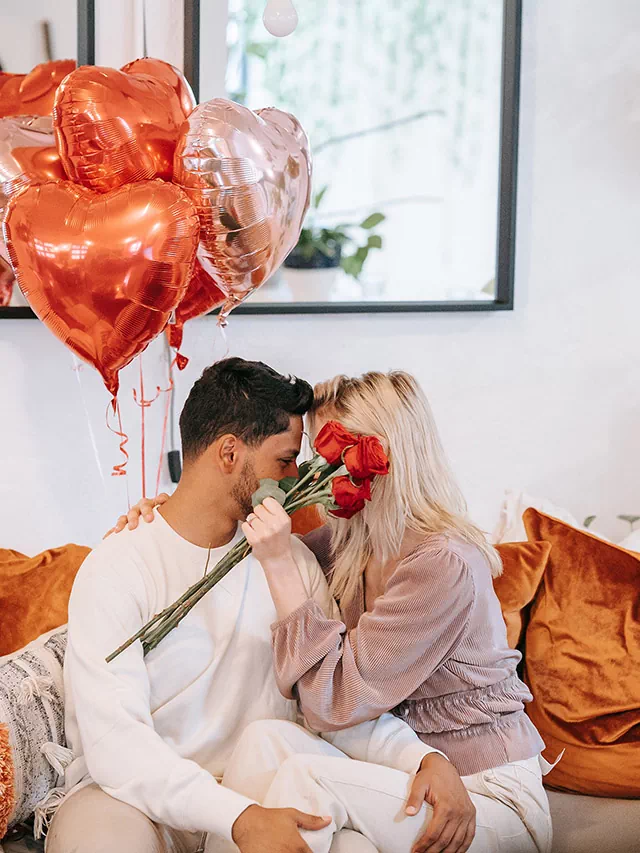Building healthy relationships is essential for our emotional, mental, and physical well-being. Relationships, whether they are romantic, familial, or platonic, are an integral part of our lives and can significantly impact our happiness, sense of fulfillment, and overall quality of life. However, building and maintaining healthy relationships requires effort, patience, and commitment from all parties involved. It requires understanding and respecting each other’s boundaries, needs, and desires while also being open and honest in communication. There are several key components of building healthy relationships that can help to foster a sense of connection, trust, and mutual respect between people. These include effective communication, active listening, empathy, honesty, shared values, and boundaries. Additionally, building healthy relationships involves practicing self-care and self-improvement, cultivating a positive mindset, and learning to manage conflicts and disagreements in a constructive and respectful way. In this context, the article has discussed 30 essential tips for building healthy relationships that can help individuals to foster strong and fulfilling relationships with the people in their lives. These tips range from practicing effective communication to prioritizing quality time, maintaining independence and supporting each other’s growth. By implementing these tips, individuals can work towards creating and nurturing healthy and fulfilling relationships that can improve their overall well-being and sense of happiness.
Communication
Effective communication involves more than just talking, it also involves active listening. When communicating with someone, it’s important to make an effort to truly understand their perspective and feelings, and to express your own thoughts and feelings in a clear and respectful manner. This means paying attention to the other person, asking clarifying questions, and avoiding interrupting or talking over them. In addition, it’s important to be honest and transparent in your communication, as well as to be open to feedback and willing to work through issues together.
Trust
Trust is the foundation of any healthy relationship. To build trust, it’s important to consistently demonstrate reliability, honesty, and dependability. This means following through on commitments, being honest and transparent, and showing up for the other person when they need you. Building trust can take time, but it’s essential for building a strong and lasting relationship.

Respect
Mutual respect is key to any healthy relationship. This means treating the other person with kindness, empathy, and understanding, and avoiding behaviors that could be hurtful or disrespectful. It also means respecting the other person’s boundaries and individuality, and valuing their opinions and perspectives. When both parties feel respected and valued, it creates a positive and supportive environment for the relationship to thrive.
Boundaries
Establishing and respecting boundaries is essential for building healthy relationships. Boundaries are the guidelines that people set for themselves in order to feel safe, comfortable, and secure. In a healthy relationship, both parties should communicate their boundaries clearly and respect each other’s boundaries. This means not pushing someone to do something they’re uncomfortable with, not crossing a boundary even if you don’t agree with it, and taking the time to understand and respect the other person’s needs and limits.
Compromise
No relationship is perfect, and compromise is necessary to maintain balance. This means being willing to negotiate and find solutions that work for both parties, rather than insisting on having everything your way. It also means being flexible and adaptable, and willing to work through disagreements and conflicts in a respectful and constructive manner.
Quality time
Spending quality time together is an essential part of building healthy relationships. This means prioritizing time together, whether it’s through shared hobbies, outings, or just quality conversation. It also means being present and engaged when you’re together, and avoiding distractions or multitasking. When both parties feel valued and prioritized, it strengthens the bond between them.
Forgiveness
Conflict and misunderstandings are bound to occur in any relationship, and forgiveness is essential for moving past these issues. This means letting go of past grievances and mistakes, and avoiding holding grudges or resentments. It also means being willing to apologize and make amends when necessary, and working together to find solutions and move forward in a positive and constructive manner.
Support
Supportive relationships are essential for personal growth and development. This means being there for the other person when they need you, and offering encouragement, guidance, and assistance when necessary. It also means being open to receiving support when you need it, and valuing the other person’s opinions and perspectives. When both parties feel supported and valued, it creates a positive and nurturing environment for the relationship to flourish.
Empathy
Empathy is the ability to understand and share the feelings of another person. In a healthy relationship, it’s important to be empathetic towards the other person and to make an effort to see things from their perspective. This means being attuned to their emotions, listening to their concerns, and offering comfort and support when they’re going through a difficult time. When both parties feel seen and understood, it creates a deeper level of connection and understanding in the relationship.
Honesty
Honesty is a crucial component of any healthy relationship. It means being truthful and transparent with the other person, even when it’s difficult or uncomfortable. This means avoiding deception, dishonesty, and half-truths, and being willing to address any issues or conflicts in a straightforward and honest manner. When both parties feel that they can trust each other to be honest and transparent, it creates a foundation of trust and respect in the relationship.
Shared values
Shared values and beliefs can help to strengthen a relationship by providing a common ground and shared purpose. This means taking the time to understand the other person’s values and beliefs, and identifying areas where you share common ground. It also means respecting areas where you may have differences, and finding ways to work through those differences in a respectful and constructive manner.
Gratitude
Expressing gratitude towards the other person can help to build a positive and supportive relationship. This means taking the time to appreciate the things that the other person does for you, and expressing your gratitude and appreciation in a sincere and heartfelt way. It also means being open to receiving gratitude and appreciation from the other person, and recognizing the positive impact that they have on your life.
Boundaries
In addition to setting and respecting personal boundaries, it’s also important to establish boundaries for the relationship as a whole. This means identifying what is and isn’t acceptable in the relationship, and communicating those boundaries clearly to the other person. It also means being willing to reevaluate those boundaries as the relationship evolves, and making adjustments as needed to ensure that both parties feel safe and respected.
Quality communication
Quality communication involves not just talking, but also actively listening and engaging with the other person. This means avoiding distractions and actively focusing on the conversation, as well as expressing your thoughts and feelings in a clear and respectful manner. It also means being open to feedback and willing to work through any issues or conflicts that arise in a constructive and respectful manner.
Self-care
Finally, it’s important to prioritize self-care in order to maintain a healthy relationship. This means taking care of your own physical, emotional, and mental well-being, and making sure that you’re in a healthy and balanced state before entering into a relationship. It also means taking the time to engage in self-care activities on a regular basis, such as exercise, meditation, or hobbies, in order to ensure that you’re able to show up fully and authentically in the relationship.
Shared experiences
Sharing experiences and creating memories together can help to strengthen a relationship by fostering a sense of connection and shared history. This means making an effort to participate in activities and events together, and taking the time to enjoy each other’s company and create meaningful experiences.
Forgiveness
Forgiveness is a critical component of any healthy relationship. It means being able to let go of past hurts and resentments, and moving forward with a spirit of understanding and compassion. This means being willing to apologize when necessary, and to forgive the other person when they’ve made mistakes or hurt you in some way. When both parties are willing to practice forgiveness, it creates a more forgiving and supportive environment in the relationship.
Flexibility
Being flexible and adaptable is essential in any healthy relationship. This means being willing to compromise and make adjustments when necessary, and to be open to new ideas and perspectives. It also means being willing to adapt to changing circumstances, and to work together to find solutions to any challenges or obstacles that arise.
Intimacy
Intimacy involves more than just physical intimacy – it also includes emotional and intellectual intimacy. This means being willing to share your thoughts, feelings, and ideas with the other person, and to create a sense of emotional closeness and vulnerability. It also means being willing to be physically intimate in a way that feels safe and comfortable for both parties.
Support
Supporting each other is a key component of any healthy relationship. This means being there for the other person when they’re going through a difficult time, and providing encouragement and support when they need it. It also means being willing to celebrate each other’s successes and accomplishments, and to offer a listening ear and a shoulder to lean on when needed.
Patience
Patience is essential in any healthy relationship. It means being willing to take the time to work through challenges and conflicts, and to be patient and understanding when the other person is going through a difficult time. It also means being willing to communicate openly and honestly, and to take the time to listen to the other person’s perspective before responding.
Respect
Finally, respect is crucial in any healthy relationship. This means treating the other person with kindness and consideration, and being willing to show respect for their thoughts, feelings, and boundaries. It also means being willing to listen to their perspective and to communicate in a respectful and constructive manner. When both parties feel respected and valued, it creates a positive and supportive environment for the relationship to grow and thrive.
Compromise
Compromise is essential in any healthy relationship. It means being willing to find a middle ground and to work together to find solutions that meet both parties’ needs. This means being willing to negotiate and make concessions when necessary, and to find ways to meet each other’s needs and expectations.
Independence
Independence is important in any healthy relationship. This means maintaining a sense of autonomy and individuality, and being able to pursue your own goals and interests outside of the relationship. It also means supporting the other person in their own pursuits and goals, and respecting their need for independence and autonomy.
Humor
Humor can be a powerful tool for building and strengthening relationships. It can help to lighten the mood and diffuse tense situations, and can help to create a sense of connection and shared experience. It’s important to find ways to inject humor and playfulness into the relationship, and to appreciate each other’s sense of humor and lightheartedness.
Shared responsibility
Sharing responsibility and working together to achieve common goals can help to build a sense of partnership and teamwork in a relationship. This means being willing to take on responsibilities and tasks together, and to work towards shared goals and aspirations.
Open-mindedness
Being open-minded and willing to consider new ideas and perspectives is important in any healthy relationship. It means being willing to listen to the other person’s perspective, even if it’s different from your own, and to consider new ideas and ways of doing things.
Quality time
Spending quality time together is important in any healthy relationship. This means carving out time to spend together, and making an effort to be fully present and engaged in each other’s company. It also means finding ways to make the most of the time that you have together, and creating meaningful experiences and memories.
Continuous growth
Finally, continuous growth and self-improvement is important in any healthy relationship. This means being willing to learn and grow together, and to support each other’s personal and professional development. It also means being open to feedback and constructive criticism, and using that feedback to improve and strengthen the relationship.
In conclusion, building healthy relationships is a crucial aspect of our well-being and can significantly impact our overall quality of life. By prioritizing effective communication, empathy, mutual respect, and shared values, individuals can build strong and fulfilling relationships with the people in their lives. The 30 tips outlined in this article provide practical and actionable steps that can help individuals to cultivate healthy relationships with their partners, family members, friends, and colleagues.While building healthy relationships requires effort, patience, and commitment, it is a worthwhile investment that can bring immense benefits to our lives. Healthy relationships can provide us with a sense of belonging, support, and love, and can help us to navigate life’s challenges more effectively. By following these tips and committing to ongoing self-improvement, individuals can build and maintain healthy relationships that can last a lifetime.














